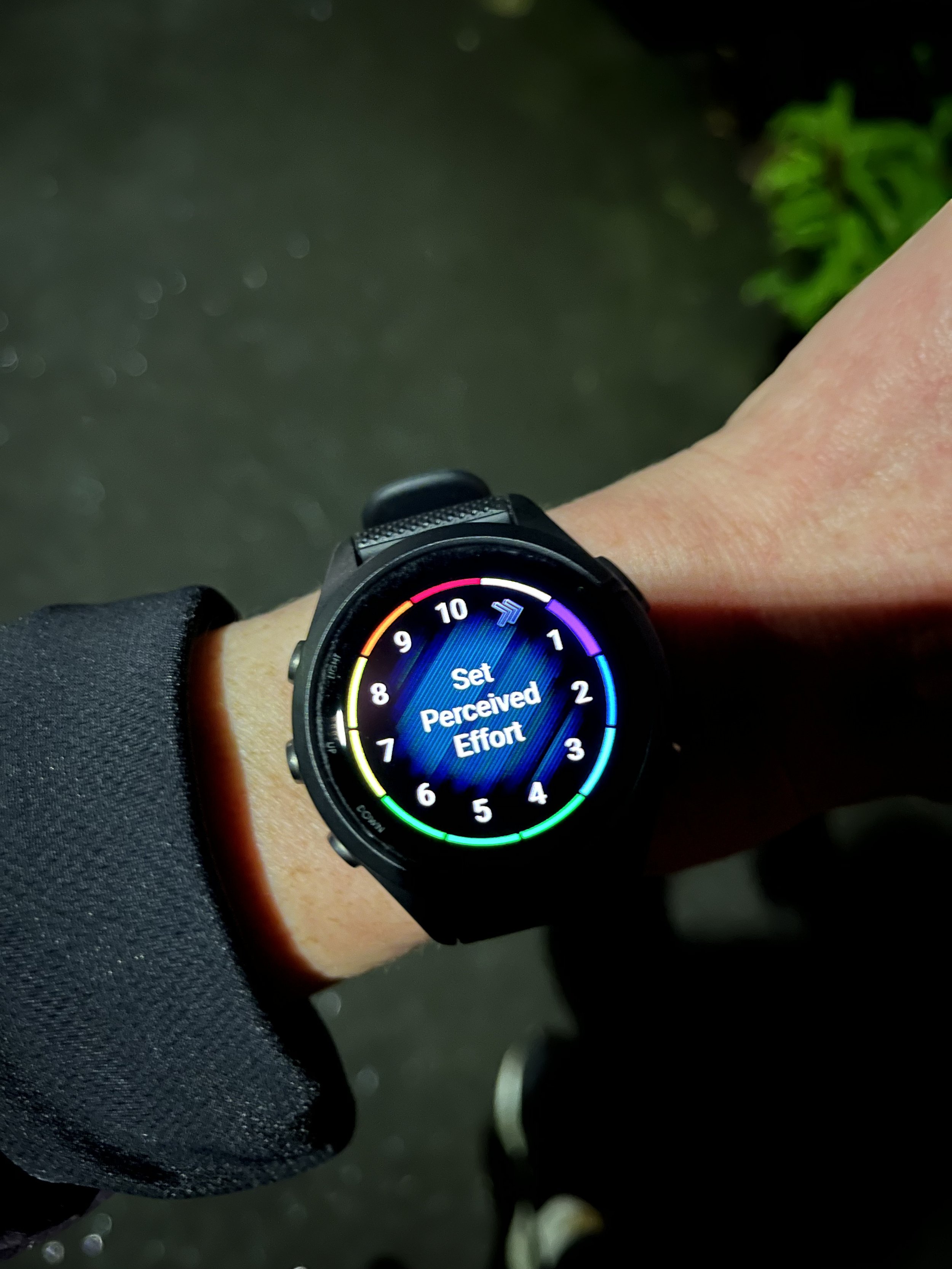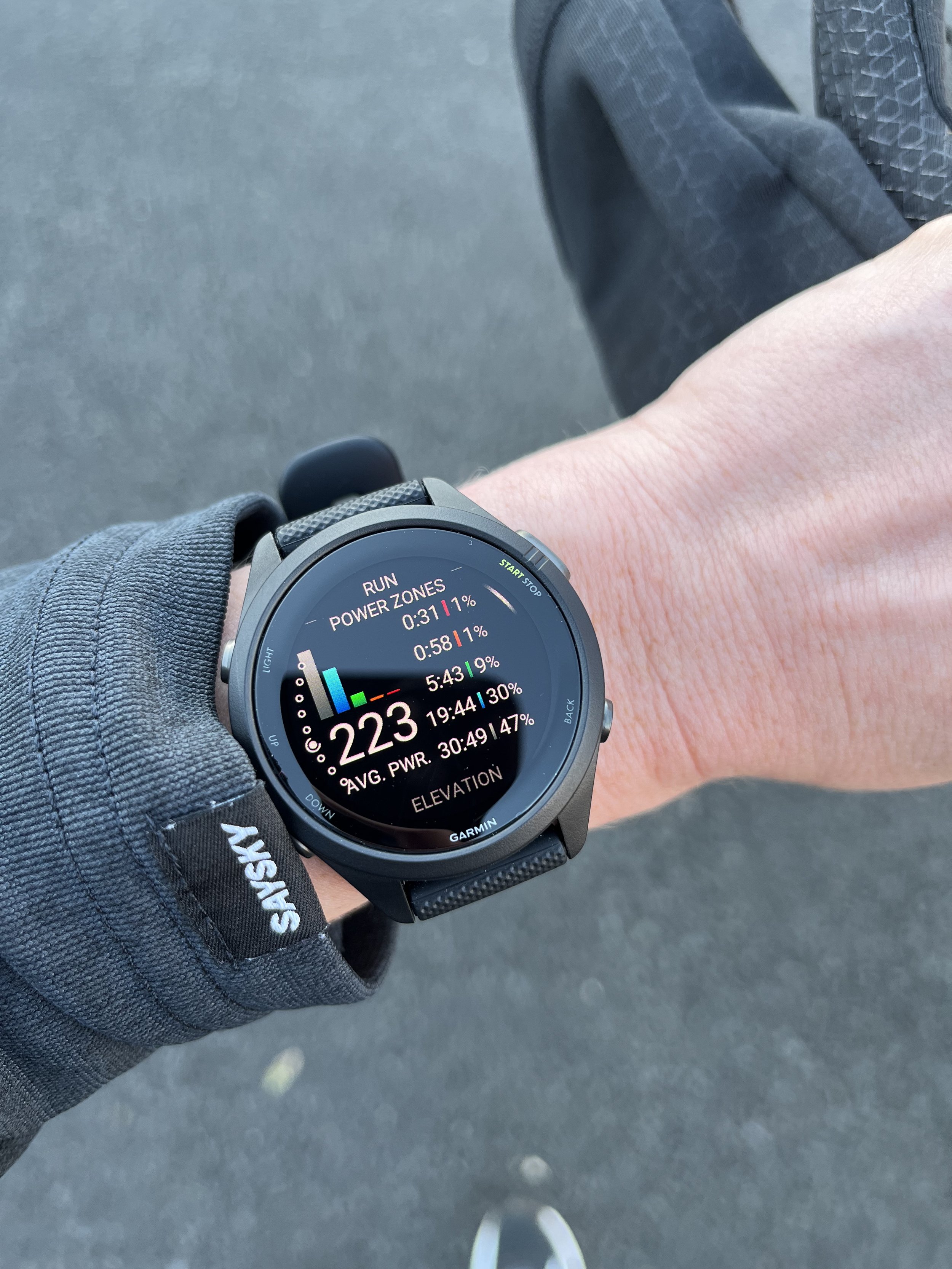Garmin Forerunner 265: everything you need to know
Garmin’s Forerunner series has long been a runners’ favourite. The Forerunner 265 is a more refined version of its mid-range watch, balancing aesthetics with performance metrics.
For those already using a Garmin, perhaps a Forerunner 245, 255 or even a Fenix, the 265 brings some changes worth noting. For those like myself who are seriously upgrading (I had a Forerunner 745 before), this is a game-changer!
How does the Forerunner 265 compare to the Forerunner 255?
The Forerunner 255 was a strong performer and is still a popular choice among runners. However, the Forerunner 265 builds on it with a few critical upgrades:
Display: The most immediate difference is the AMOLED touchscreen display on the 265. It's vibrant, responsive, and offers significantly improved visibility in both low and bright light. The 255 uses a MIP (memory-in-pixel) screen, which is great for battery life but lacks the sharpness and color of the 265.
User interface and touchscreen: The addition of the touchscreen is more than cosmetic. Navigating through training data, maps, and widgets feels faster and more intuitive. Button controls remain for those who prefer physical interaction during workouts.
Training readiness score: Exclusive to the 265, this metric evaluates how prepared you are for intense training, factoring in recent sleep, recovery time, heart rate variability, and stress levels. The 255 lacks this feature.
Music storage: Music is standard on the 265, while it was an optional upgrade on the 255 ("255 Music").
Battery life: The 255 edges out the 265 slightly in terms of battery life, particularly in GPS mode, likely due to the more power-efficient display. However, the 265 still offers up to 13 days in smartwatch mode and around 20 hours in GPS mode—more than sufficient for most training needs.
If you're focused on race training, data analysis and want the latest display tech, the 265 is a meaningful upgrade. But if you already own the 255, you probably don’t need to switch until the battery life of your current watch is declining.
Key features of the Forerunner 265 that add real value for runners
Here are the features that made me choose the Forerunner 265 as my new watch, upgrading from my old the Forerunner 745.
Morning report: This daily feature summarizes your sleep, recovery status, HRV trends, and weather forecast as soon as you wake up. For data-driven runners, this is a quick snapshot of whether to push hard or ease off.
Training readiness: Unlike basic recovery time metrics, this feature uses a holistic view of your health—combining sleep history, recent stress levels, and HRV—to give a more nuanced perspective on your ability to train effectively that day.
Race widget: A tool that tracks your progress toward a target race date, offering race-specific workouts, expected finish times, and taper guidance.
Dual-frequency GPS: This improves accuracy in tough environments—great for urban runners or those training in wooded or mountainous terrain.
Not to mention the multiple other features that I didn’t have on my old Forerunner 745, such as HRV data or the ability to set the perceived effort post-activity.
Most common questions runners ask about the Forerunner 265
These are some of the most frequent queries about the Forerunner 265, that you may be asking yourself before investing in a new watch.
Is the heart rate monitor accurate during intervals and high-intensity runs?
The optical heart rate sensor performs well in steady-state efforts but can be inconsistent during rapid HR changes such as intervals or hill sprints. For more accurate readings during high-intensity training, pairing a chest strap (e.g., HRM-Pro) is recommended.
Is there a delay in showing accurate pace during intervals?
There is a slight lag of a few seconds when displaying your actual pace, which is common among GPS watches. I personally found that it’s only an issue with very short intervals (like 30 seconds on/off) as I don’t know my actual pace in real time, I only find out afterwards.
Does dual-frequency GPS make a noticeable difference?
Yes, particularly in urban areas with tall buildings or trails with dense foliage. Runners have noted improved route accuracy and smoother GPS tracks compared to single-band models.
Is the AMOLED screen worth it?
This depends on your priorities. The screen looks fantastic and improves the user experience, especially for viewing data on the go. However, it does draw more power than the MIP screen found on the 255, though not dramatically so.
How does the Training Readiness score compare to other recovery metrics?
It’s more comprehensive than older tools like "Recovery Time." Runners who use HRV tracking and pay attention to sleep data find it helps them make smarter decisions about when to push and when to rest.
Is it comfortable for long runs and races?
The watch is lightweight (around 47g) and has a slim profile, making it comfortable even for marathon distances. The silicone strap is soft and breathable, with no irritation issues reported during longer efforts.
Final Thoughts
I’m personally very pleased with my Garmin Forerunner 265, which combines all the training functionalities I need as a runner with daily usability. I also really like that it’s less chunky on my small wrist than the Forerunner 745 I previously had and that had nowhere near as many useful features!
Latest running posts
This post contains some affiliate links. I may earn a small commission if you make a purchase through this blog, however it doesn’t change the price of the item for you. Thank you for your support.







